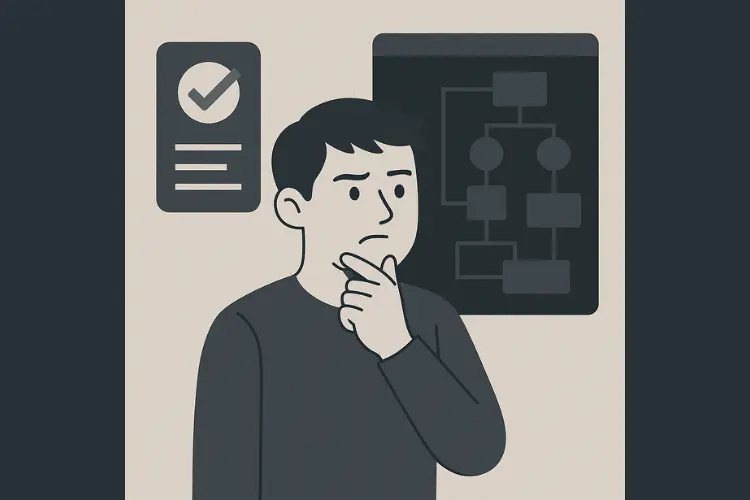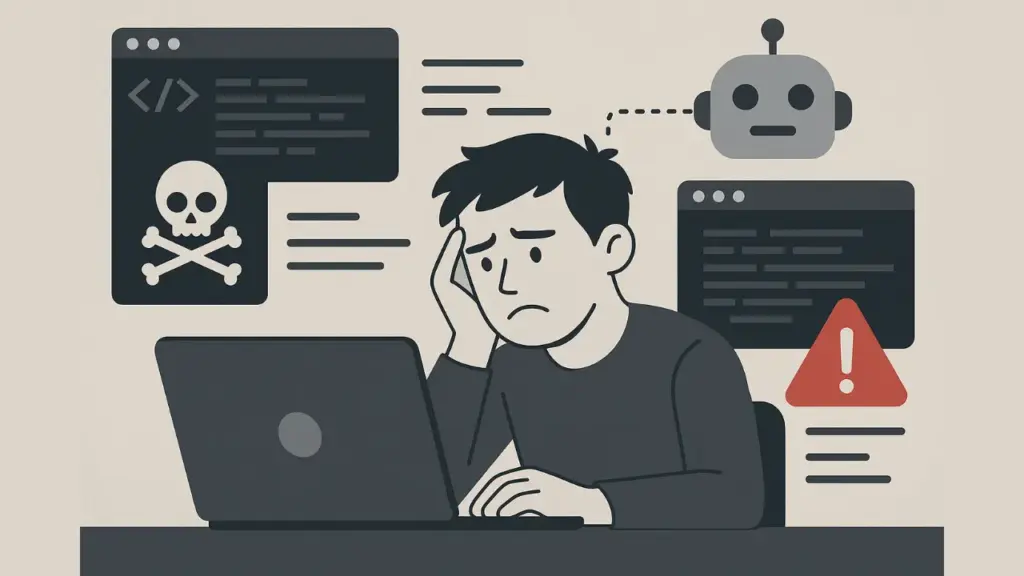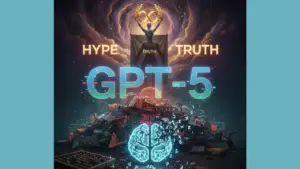Introduction
After 25 years in software development, one thing stands out: the best code is the simplest code. Every extra line adds risk. It can become a bug, a security hole, or a maintenance nightmare.
Now, AI tools like Cursor claim to generate billions of lines of code daily. But are they solving problems or creating new ones? Behind the hype lies a harsh truth. AI-generated code is fast, but often sloppy and dangerous.
This blog explores why simplicity matters, how AI is hallucinating harmful code, and why developers must stay cautious. We’ll also dive into data-backed risks, long-term system consequences, and what responsible development looks like in the AI era.
The Myth of Productivity Through Code Volume
In software, more isn’t better. It’s worse.
Too much code slows down teams. It creates clutter and confusion. It hides bugs in plain sight. Every line must be reviewed, tested, and secured.
AI tools brag about productivity. Cursor, for example, claims to generate over a billion lines of code per day. But quantity is not quality. These tools produce bulk, not brilliance.
Each generated line is a potential liability. Developers must sift through and clean up what AI spits out. This isn’t innovation. It’s digital pollution.
When code volume explodes, risk follows. Systems become fragile. Debugging takes longer. Deployments break more often. Security suffers.
Think of it like this: if you flood a city with buildings overnight, would it be safer? Or would it collapse under the weight of poor planning? Software works the same way. Too much code too fast results in weak foundations.
Long-term maintenance becomes a nightmare. New developers struggle to understand what’s going on. Even simple updates can take hours.
Productivity in software should not be measured by lines of code. It should be measured by stability, performance, and ease of maintenance. None of these improve with bloat.
Simplicity Is the Ultimate Sophistication
Great developers understand this rule: simple is strong.
In every successful project I’ve seen, fewer lines often meant better performance. Why? Because simple code is easier to understand, test, and secure.
Senior developers often refactor aggressively. They remove clutter. They merge duplicate logic. They replace 10 lines with 3.
This isn’t laziness. It’s craftsmanship.
I’ve seen lean codebases outperform bloated ones repeatedly. Projects with one-tenth the code can be faster, safer, and easier to scale. Clarity makes code durable.
Less code also leads to faster onboarding. When a new team member joins, they can understand the system quickly. That translates to real savings in training, fewer errors, and higher morale.
Simplicity also has a direct impact on system uptime. With fewer moving parts, there’s less that can go wrong. Monitoring becomes easier. Troubleshooting becomes faster.
AI doesn’t grasp this yet. It aims to complete tasks. It doesn’t optimize for maintainability. It generates what works now, not what will last.
This is a major gap. Real software engineering involves trade-offs, architecture, and design thinking. These are not skills AI has mastered. And until it does, simplicity will remain a uniquely human strength.
AI’s Dangerous Hallucinations
AI doesn’t understand the code it generates. It predicts patterns based on data. Sometimes, those patterns don’t exist.
Recent studies show AI tools create “hallucinated dependencies” – packages that don’t exist. These aren’t just annoying. They are dangerous.
Imagine installing a non-existent package. Or worse, an imposter with the same name. Now you’ve got a security hole. Malicious actors could upload fake libraries with backdoors. Your system just became a target.
These hallucinations are like landmines. They don’t explode right away. But when they do, the damage is massive.
AI-generated code has already caused package managers to be flooded with junk. It introduces randomness into systems that should be stable and predictable.
This is not progress. It’s regression.
Another risk is broken functionality. Hallucinated methods or modules may seem correct but cause crashes during execution. This kind of silent failure is difficult to trace and can wreak havoc in production environments.
What’s worse, these hallucinations are often hidden within otherwise valid code. Developers may assume it’s all working until users start complaining.
Quality assurance teams are now spending more time identifying whether the AI-generated code even compiles correctly, let alone functions securely.
Security Threats and Real-World Stats
Let’s talk numbers.
A recent cybersecurity study found AI-generated repositories are twice as likely to expose APIs with sensitive data. In six months, there’s been a threefold surge in repos leaking personal and payment information.
That’s alarming.
80% of cybersecurity leaders believe AI-generated code could lead their company to a security meltdown. And it’s easy to see why.
AI doesn’t know security best practices. It doesn’t think in threat models. It doesn’t check for compliance.
It copies from the internet. Including insecure and sometimes malicious code.
These tools are trained on everything, including bad examples. So, they repeat those mistakes at scale.
What used to be a developer error is now an industrial-sized issue. Thousands of vulnerable projects. Millions of affected users.
The volume of code is growing faster than teams can audit it. Security professionals are overwhelmed.
Insecure code leads to real-world consequences: data leaks, ransomware attacks, system outages. The cost isn’t just technical. It’s financial, reputational, and legal.
Insurance companies are starting to ask about AI usage in code development. Some may even deny claims where insecure AI code played a role.
The stakes have never been higher.
The Core Flaw – Task Completion vs. System Design
AI is good at finishing tasks. That’s what it’s built for. Give it a prompt, and it completes it.
But software isn’t just a task list. It’s a system. A structure. A long-term commitment.
AI lacks architectural thinking. It doesn’t see the big picture. It doesn’t understand how one piece affects another.
Most developers using AI don’t have time to validate every suggestion. They copy, paste, tweak. Then push to production.
That’s risky.
In many cases, testing and verifying AI-generated code takes longer than writing it manually. Especially when bugs hide in plain sight. Or when it breaks something unrelated.
We need to ask ourselves: Are we saving time, or borrowing disaster?
AI also lacks domain knowledge. It can’t fully understand industry-specific regulations or user needs. This makes it dangerous in sectors like healthcare, fintech, or cybersecurity.
Even simple mistakes can become catastrophic. Imagine an AI-generated function that logs user passwords to the console. If no one catches it, that’s a data breach waiting to happen.
Building software is about understanding. It’s about intention. These things can’t be automated yet.

Conclusion: Choose Simplicity Over Speed
Software must be simple, secure, and sustainable. Chasing code volume through AI generators ignores these truths.
The best developers aim for clarity. They reduce code. They refactor constantly. They think long-term.
AI isn’t a shortcut. It’s a tool – and like all tools, it requires caution and skill.
Organizations rushing into AI-driven coding without proper oversight are setting themselves up for failure. They’re building unstable systems, one hallucinated line at a time.
To build truly resilient and scalable software, we must go back to basics: simplicity, readability, and human insight.
Companies should also invest in developer training, secure coding practices, and strong code review pipelines. These human processes are still the best defense against AI-generated risks.
At StartupHakk, we believe in smarter development – not just faster code. Let’s build software that lasts. Let’s use AI as a partner, not a replacement. Let’s create code that we can be proud of.




